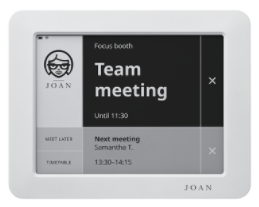Since the Industrial Revolution and then the Plastic Age, humans have been cutting out more resources than the planet can spare. Realizing this, companies have begun to take steps toward reducing their waste. Sustainable offices are designed to reduce the company’s environmental footprint, balancing our consumption of natural resources with the rate at which the planet can replenish them.
Sustainable practices not only protect mother Earth but also support the wellbeing of in-office employees. Elements such as living walls, natural sunlight, and the feel of natural, replenishable resources can boost mental health of employees and their sense of being cared for.
According to recent studies, “many job seekers are attracted to organizations with sustainable practices.” Applying sustainable practices not only lessens your company’s environmental footprint, but also improves employee satisfaction and reduces the company’s employee turnover rate.
So, now that we know some of the benefits of sustainable office design, what aspects make an office sustainable?
Energy
Reducing the office’s energy is a key goal for creating a sustainable workspace. So what, in your office, could be wasting energy?
Computer usage. Sustainable companies encourage employees to turn their computers off in the evenings and on weekends—not just put them to sleep. Aside from impacting your carbon footprint, computers left on standby overnight and on weekends can cost your company $30 per year—an amount that adds up when multiplied by the number of employees in the office.
Also, turn off office utilities when they’re not in use, including copy machines, printers, and other office necessities. Most “sustainable” companies reduce their environmental footprint by 30 percent or more. Small steps, such as turning off electronics, add up.
Another word for “sustainable” is “green.” So, when looking for more natural, environmentally-friendly materials, keep an eye out for “green” solutions.
For example, the Joan 6 meeting room booking system is considered “green” because of its small energy footprint. A single charge can power the device for up to three months. Not to mention, it’s e-ink, paper-like display provides the look and feel of paper without generating paper waste.

If you think these are our only suggestions for energy savings, sit tight. There are more energy-saving tips in the next section.
Light
Many organizations find that lighting is their worst culprit for energy waste. Yet, with a few simple steps, your company can reduce your light-related energy consumption.
Consider changing all of your bulbs and light fixtures to more sustainable ones, such as LEDs and LED-compatible fixtures. Configure your office lights to turn off in the evenings and on weekends. Alternatively, install motion sensors to trigger the office lighting.
Best yet, maximize your use of natural light. If direct lighting is a concern, install smart blinds, which automatically rise and lower with the changing of daylight.
On top of being environmentally friendly, there are many health benefits from natural daylight. Employees who see little light tend to experience problems with their mood, weight, energy, and more.
Water
Water-efficient appliances can work wonders toward reducing a company’s environmental footprint.
First off, invest in a water audit to get an idea of how much water your company is wasting and which appliances are generating the waste. Next, upgrade your fixtures to water-efficient faucets, toilets, and more. Consider alternate water sources or recycling water. Mount Royal University in Calgary, Canada, harvests rainwater to supply toilets and urinals.
Materials
Research which materials have the biggest footprint on the environment. For example, in general, plastics take 450 years to decompose, whereas steel takes 50 years to rust and decompose.
Green materials don’t always refer to biodegradability or how fast the material can be replenished. Green also refers to the longevity of the material. For example, aluminum is not biodegradable. However, products made with aluminum are considered to have a long life span and cause less waste.
Some green material favorites are bamboo, cork, reclaimed or re-used wood and metal, hemp, linen, and cotton. Have a look for “green” materials before investing in benches, sofas, chairs, and even desks.
Another step toward using green materials would be to invest in electronic companies that manufacture their products with greener alternatives. Some “favorable materials used in green electronics are aluminum, borosilicate glass, iron alloy, graphene and biomaterials.”
Conclusion
Reducing your environmental footprint requires planning, but doesn’t need to take a whole lot of energy. Consider this: if you install energy-efficient faucets, reducing a sink’s water flow, you can cut water usage back by 30 percent. That 30 percent saves the company on utility bills, returning the financial investment your company spent on the faucets.
The same could be said for new light fixtures, bulbs, and by investing in materials that will last.
Transforming your office into a sustainable space can benefit your company’s image, employee satisfaction, and, ultimately, the company’s pocketbook. You can start by taking a look at Joan’s product portfolio. The longer you wait, the more you miss out on.
Insights that keep your office running smoothly
Fresh content on productivity, space management, and the future of work. Perfect for managers, admins, and busy teams.
Join thousands of workplace professionals who already read the Joan blog. Unsubscribe anytime.